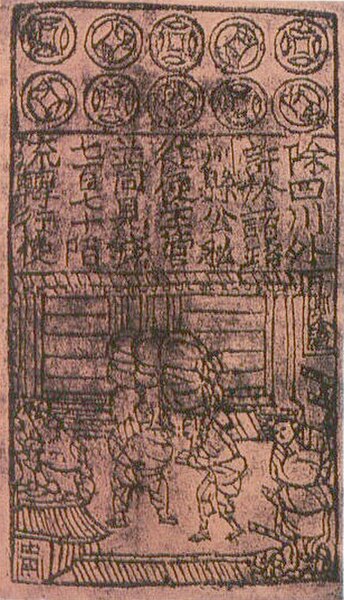A banknote—also called a bill, paper money, or simply a note—is a type of negotiable promissory note, made by a bank or other licensed authority, payable to the bearer on demand. Banknotes were originally issued by commercial banks, which were legally required to redeem the notes for legal tender when presented to the chief cashier of the originating bank. These commercial banknotes only traded at face value in the market served by the issuing bank. Commercial banknotes have primarily been replaced by national banknotes issued by central banks or monetary authorities.
Song dynasty Jiaozi, the world's earliest paper money.
A Yuan dynasty printing plate and banknote with Chinese words.
Marco Polo described the use of early banknotes in China to Medieval Europe in his book, The Travels of Marco Polo.
The first paper money in Europe, issued by the Stockholms Banco in 1666.
A negotiable instrument is a document guaranteeing the payment of a specific amount of money, either on demand, or at a set time, whose payer is usually named on the document. More specifically, it is a document contemplated by or consisting of a contract, which promises the payment of money without condition, which may be paid either on demand or at a future date. The term has different meanings depending on its use in the application of different laws and depending on countries and contexts. The word "negotiable" refers to transferable and "instrument" refers to a document giving legal effect by the virtue of the law.
A 1939 promissory note, Rangoon, Burma.
An 1870 bill of exchange payable in London with British Foreign Bill revenue stamps attached.
Belgian bill of exchange, 1933







